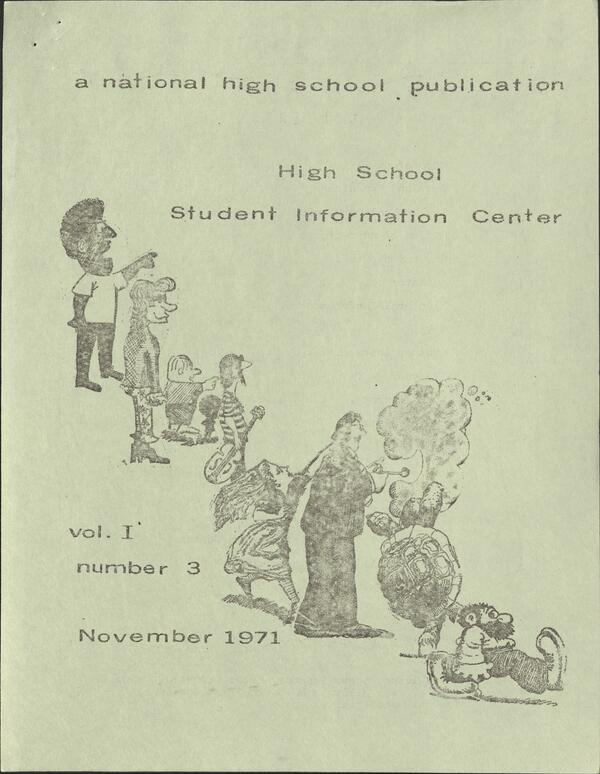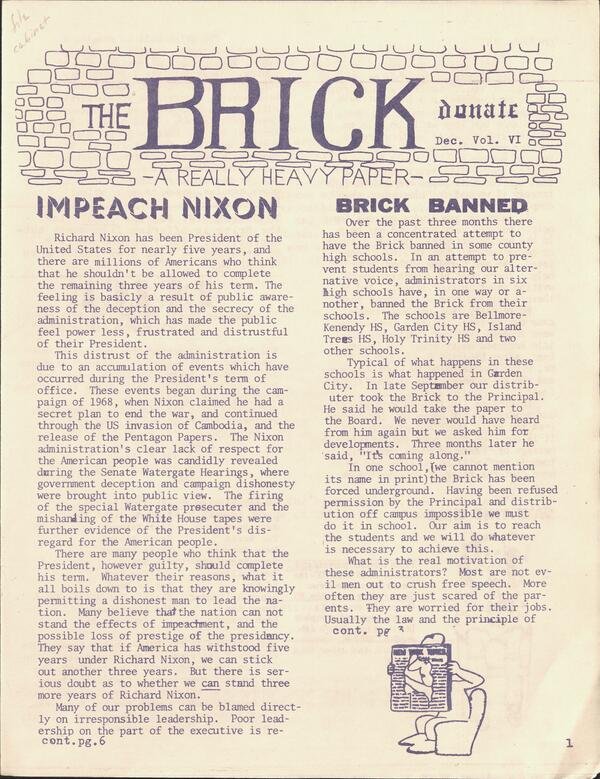Over the past six months, I have had the privilege of working to digitize the Alternative Press Collection (APC) here at the University of Connecticut Archives and Special Collections. While the APC contains publications created by all kinds of people that discuss all kinds of topics, a large portion of the collection focuses on activist movements during the 1960’s and 1970’s. I began working to digitize files from the APC after I graduated from UConn and have thus looked at a lot of different materials dealing with many different forms of activism.
When studying the history of activism in the United States, a lot of sources will focus on the groups and movements that were either created by or largely consisted of young adults, particularly those in college. This is hardly surprising, given that college communities are most often structured in a way that encourages students to spend substantial amounts of time together and discuss current events, which often leads to like-minded individuals coming together over specific topics. College students also have easier access to resources such as printing which makes spreading awareness easier than it otherwise would be. When all these things are put together, they create a recipe for large activist groups that can leave behind tangible evidence of their activities and their beliefs.
One branch of activism that is less frequently discussed, however, is high school activism. This is, again, not unexpected. High school students have access to fewer resources than their college-level counterparts and are often subject to more restrictions around where and when they’re able to assemble. But teenagers across the country have always been a part of activist movements. Within the Alternative Press Collection here at the UConn Archives and Special Collections, there are several different publications created by High School activists who had hoped to give students access to points of view other than what they might get from their parents and teachers, and to spread awareness of movements and events that they might not otherwise hear about.

The different publications come from across the country and cover topics ranging from nationwide movements all the way down to local issues, from an investigation into the legal rights of American high school students to a discussion about an income tax versus a sales tax in Windsor, Connecticut. Some of these publications also claim that the administration at their schools have explicitly forbidden them from writing and publishing these articles, yet they have decided to do so anyway, despite the possible consequences. In an issue of ‘The Brick; A Really Heavy Paper,’ for example, an anonymous contributor describes the pushback this publication received from school boards and administrators in various schools in Nassau County, New York.
“In one school, (we cannot mention its name in print) the Brick has been forced underground. Having been refused permission by the principal and distribution off campus is impossible we must do it in school. Our aim is to reach the students and we will do whatever is necessary to achieve this.”

Publications like The Brick serve as important reminders that activism has no age limit. To see more examples of High School activist publications, follow this link to the Alternative Press Collection High School Publications folder.
